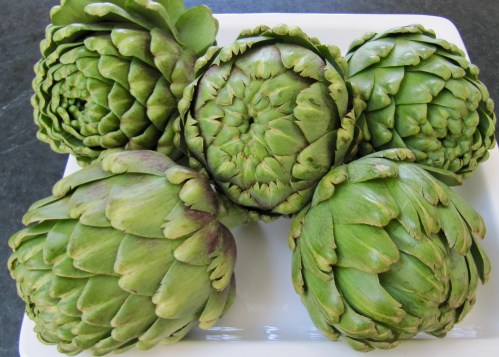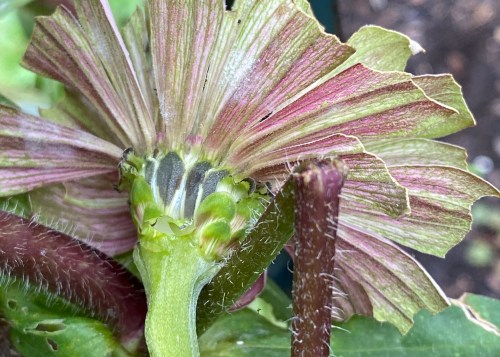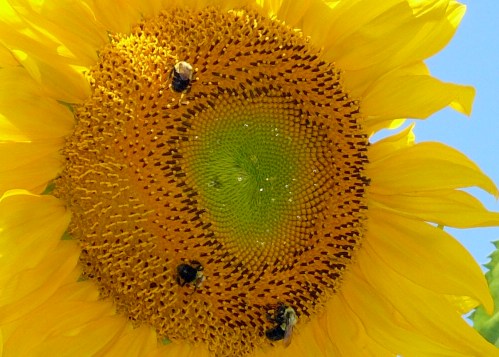In 2010, I read an article in StyleBlueprint about a heart tree created by my smart and beautiful friend, Martha Ivester. I’ve been thinking about “hearting a tree” ever since. Last week, Martha posted instructions for how to make the heart pillows on Facebook. It was just the inspiration I needed to get started.

The tradition of hearting a tree started at Martha’s former church, The Parish of the Epiphany, in Winchester, Massachusetts. At first, parishioners hearted a tree by their church. Soon after, parishioners started hearting trees anonymously at night at the homes of friends and shut-ins who needed a boost of good cheer.

“The most important aspect of making hearts is to gift them to someone,” said Martha. “One of my favorite memories of Nashville was the year eight moms and their children gathered together for two mornings of heart-making for friends who needed cheering up. We hearted a tree for a friend who lost a parent, for another who had a sick child, and for another who was going through treatment for cancer. The experience created a sweet moment of community and connection.” Martha currently lives in Copenhagen and still hangs hearts in front of her house for Valentine’s Day.
Thus inspired, I decided it was a good weekend to spread a little winter cheer on my street. My first task was to find a heart template; Google to the rescue! I chose two different sized hearts- a stout one and a long one. The stout heart image came from here.

I printed the hearts onto 8″ x 11″ sheets of card stock.

By the time I made the hearts and filled them with fiber, they looked like this sizewise.

Next, I searched the house for fabric. I recycled a bright orange tee-shirt,


a few of my husband’s tired-looking cotton shirts,

my kids’ old bandanas, and leftover fabric from various craft projects. The only item I had to purchase were the three bags of polyester filling.
To get started, lay out a piece of folded-over fabric with right sides facing each other. Trace the heart image onto the wrong side of the fabric with a marker. I aimed to get 3-5 hearts from each piece of fabric.

Next, use straight pins to hold the two pieces of fabric together before cutting them.

Sew the hearts together, leaving a two-inch opening on one edge of the heart. Be sure to double back over the stitching, so the stitches don’t unravel.

Using sharp scissors, cut little slits into the seam allowance around the heart’s curved edges to make it easier for the heart to lay flat once it is turned right side out.

Do the same around the pointed edge of the heart.

Turn the fabric right side out. Use a slim, smooth, pointy object to push out the point of the heart. I used the dull end of a paintbrush.

Fill each heart with polyester fiber.

Sew up the opening from where you inserted the filling.

I traced the heart image onto 15 hearts, then pinned all of them, then cut, sewed, snipped, turned them right side out, stuffed them with fiber, and hand-sewed all the openings shut — assembly-line style. It helped speed up the construction process.


Cut 36-inch strips of heavy-duty string to hang the hearts on the trees. I chose a thick cotton yarn that would not snap when tugged at. I used an embroidery needle to poke through the pillow and make the knot.

Martha likes to finger knit or crochet a chain-stitched string with colorful yarns when she makes hearts.


Attach a pillow to each end of the string.

Hang them on a tree and brighten someone’s day, including your own!

PS: No worries if your fabric print comes out upside down!

PPS: You may notice that the heart-opening is at the top of the heart in some of the photos. After I made the first few hearts, I moved the opening to the side of the heart. It was much easier to sew up that way.
Related Stories:
My Favorite Rollout Butter Cookies

How to Make Royal Icing and Decorate Cookies

Chocolate Birthday or Valentine’s Day Cake

Lily’s Red Velvet Cake

Follow Judy’s Chickens on Instagram and Pinterest @JudysChickens.
If you enjoyed this post, consider becoming a follower. Be sure to press “confirm” on the follow-up letter sent to your email address.
© 2014-2021 Judy Wright. All rights reserved. Photos, videos, and text may not be reproduced without the written consent of Judy Wright.
























































































